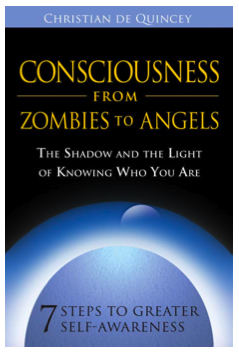Consciousness from Zombies to Angels
![]()
New WisdomBlog

Click here for frequent updates on
consciousness.
![]()
Consciousness
—
from —
Zombies
to
Angels
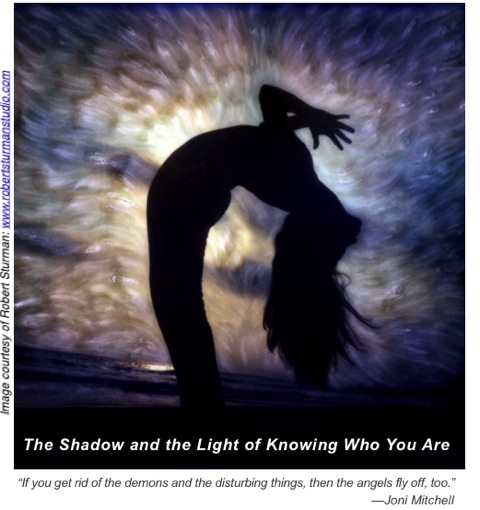
An
Interview with Christian de Quincey, Ph.D.
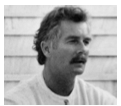
Q: What will people learn from
Consciousness from Zombies to
Angels?
CdeQ:
Readers
will join me on the greatest adventure of all:
an
exploration of philosophy’s hardest problem,
science’s final frontier, and
spirituality’s deepest mystery. They will find
seven simple steps on the path to knowing who they
truly are.
I'm a
professor of Consciousness Studies at John F. Kennedy
University and Dean of Consciousness Studies at the
University of Philosophical Research. I've been
teaching and writing about consciousness for decades.
It's my life-long passion.
I wanted to create a comprehensive,
easy-to-understand “user’s guide”
to to the mind—exploring the full spectrum of
consciousness from philosophy through science to
spirituality. This book is based on presentations and
handouts I created over the years for my students to
inform and inspire them about the nature and
possibilities of our most intimate
reality—consciousness.
Q:
How did you come up with the
title?
CdeQ: Originally,
I wanted to write a kind of Consciousness
for
Dummies book—like
Meditation
for Dummies, Yoga for Dummies, Philosophy for
Dummies, etc. But I
wanted to call it Consciousness
for Zombies. You see,
in philosophy, a “zombie” is a very
special kind of creature: It is just like a human in
every way, except
it has no mind or consciousness
whatsoever. Then
(after prompting from my publisher), I realized that
probably only philosophers would get the pun. So I
went to Plan B.
The subtitle of the book is The
Shadow and the Light of Knowing Who You
Are. It means
that if we are really serious about exploring
consciousness we must be willing to work with our own
shadow and light. Everyone has a
“Shadow”—those negative aspects of
ourselves (our fears, guilt, shame, anger) that we
have pushed down into our unconscious from early
childhood. But whatever we suppress remains in us and
we either project it onto others or it erupts in some
kind of mind-body illness.
And we not only suppress our “miserable”
selves, we also suppress our
“magnificent” selves—those parts of
us that are creative, powerful, compassionate, and
loving. To really know who we are, and to grow as
healthy spiritual beings, we need to embrace both our
Shadow and our Light. As Joni Mitchell said:
“If you get
rid of the demons and the disturbing things, then the
angels fly off, too.”
We
need to embrace our inner “zombies” as
well as our inner “angels.” And
so: Consciousness
from Zombies to Angels. It’s
a “user’s guide” to the mind from
“Z” to “A.” To make the most
effective use of this guide, we need to use our four
gifts of knowing.
Q:
What are the ‘Four Gifts of
Knowing’?
CdeQ:
Each of us
has many different
ways of knowing, with the
potential to be a philosopher, a scientist, a shaman,
and a mystic. It all depends on where we focus
attention and what gifts we decide to cultivate.
The
Scientist’s Gift is
our senses—and
a method
for testing our
assumptions and beliefs through the power of
rigorous observation;
we use
this gift to explore the world of matter, including
our bodies.
The
Philosopher’s Gift is
reason
and
language;
we use this gift to explore the realm of mind.
The
Shaman’s Gift is
feeling
and
alternative
states of consciousness; we use
this to explore the domain of soul.
The
Mystic’s Gift is
intuition
and
sacred
silence; we use
this to unite with the essence of spirit.
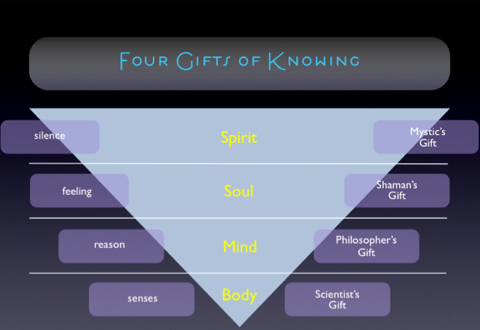
If
we wish to truly understand consciousness, we need to
cultivate and integrate all our “gifts of
knowing.” It’s not enough to just study
the brain using the Scientist’s Gift (though
that is valuable, too). And using just the
Philosopher’s Gift of reason, logic, and
language gives us only intellectual knowledge
about
the mind
(also useful if we want to talk or write about
consciousness). However, it cannot bring us to the
heart of consciousness itself which is
experience.
For that, we need to also cultivate deep awareness
of feeling
and
intuition
(the
Shaman’s and Mystic’s Gifts).
We need these last two gifts to develop and evolve
consciousness. No amount of information about how the
brain works or intellectual knowledge of the mind
will ever lead us to transformation.
We need to
be willing to be open to the full spectrum of
consciousness—including our shadow and light,
our inner zombies and angels. And to do so
effectively, we need to engage in some form of
psycho-spiritual practice.
It seems to me that the essence and aim of all
spiritual practice is to help us cultivate what I
call “experience
beyond belief.”
Q:
What do you mean by ‘experience beyond
belief’?
CdeQ:
These
days, it’s quite common to hear people say,
“you create your own reality” or
“reality is whatever you believe.” The
idea is that we can create or change the world simply
by changing what we think or believe.
That seems to me to be a big mistake. Yes, indeed,
consciousness does play a role in shaping the
physical world. But be careful. The truth is not so
simple—or as simplistic—as the popular
cliché would have us believe. It is based on a
confusion between “belief” and
“intention.” Beliefs are mental habits
that block our creative power. Intentions, however,
are creative and have power to change lives. They are
purposeful, focused expressions of consciousness
through choice.
Beliefs, on the other hand, are frozen fragments of
consciousness, static snapshots of reality. It works
like this: first, at every moment, we are having
an experience.
Then,
we interpret
our
experience using thoughts (words and ideas). But
every thought is an abstraction,
literally
plucked from the ongoing stream of experience. Next,
we solidify our thoughts by turning them into
beliefs.
We assume that what we think is true (that’s a
definition of “belief” ). But we
don’t stop there. We often go a step further
and turn our beliefs into dogma
by
believing
our beliefs. We insist
that our beliefs equal reality (that’s the
definition of dogma).
The problem is we then act
based on
what we believe. But, as everyone knows, a belief can
be right or wrong. For example, some people believe
that God exists, some people don’t. Who’s
right? They can’t all be right, because those
beliefs cancel each other out. And if beliefs really
did create reality, then here’s what would
happen: When people believe in God, God would exist,
and when people don’t believe, God would not
exist. So, God would be popping in and out of
existence on the whims of what human beings believed.
What a strange Supreme Being that would be!
It’s important to remember that
any
belief can
be right or wrong (it may more or less accurately
match reality or it may totally miss the mark).
However, an experience
can never
be wrong. Every experience always is
exactly
what it is. You can
never have a “mistaken” experience. You
can be mistaken only about your interpretation
(thought or belief) of your experience.
Therefore, since beliefs run the risk of being wrong,
and experience is never wrong, it makes far more
sense to pay attention to your experience than to act
on your beliefs. I’m saying that the goal of
every spiritual practice is to eliminate the
“middle man” of interpretation and
belief, and to act
directly from experience.
Here’s what typically happens:
experience —> interpretation —>
belief —> dogma —> action
By
contrast, when we cultivate “experience beyond
belief” we become like martial artists, great
athletes, or creative artists who act
in the
moment based on
what they actually experience.
Have you
ever noticed that consciousness or experience always
happens right
now. And, have
you noticed when reality happens? Like experience,
reality also happens right
now. That’s
very convenient. It means that our experience
connects us directly with reality.
However,
our thoughts and beliefs always distort reality in
some way. They remove us from
the in-the-moment
experience
where we connect directly with what
is. That’s
why I encourage us to cultivate experience
beyond belief. And to
learn to act directly from experience:
experience —> action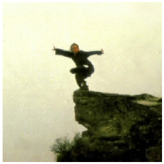
Q:
Are you saying we should give up all our
beliefs’?
CdeQ:
Not at
all. We can’t help having beliefs (it’s
what our minds have evolved to do, and they do that
job very well). But we can choose whether or not to
be attached to our beliefs. We can choose whether or
not we believe
our
beliefs to be true. I’m encouraging us not to
believe our beliefs. Rather, I suggest that we learn
to notice them, and then release them, let them go.
Wisdom resides in our moment-to-moment experience,
not in our beliefs. As habits of mind, beliefs are
conditioned by the past. Experience, on the other
hand, always occurs in the present
moment—now.
Of course, I don’t want you to believe what
I’m saying, either. I do, however, want you to
listen with an open mind, and to allow yourself
to feel
and
experience
whatever
comes up for you as you respond to the meaning of my
words. Pay
attention to what you are
feeling—to
the sensations rippling through your body.
That’s the source of your wisdom. Not your
abstract thoughts.
As long as we have bodies, we will have ego-minds,
and as long as we have ego-minds we will have
beliefs. We don’t have much, if any, choice
about that. But we do have a choice whether or not
to believe
our
beliefs.
I often remind students of Plato’s final words.
On his deathbed, the great philosopher gathered his
followers around him and told them that everything he
had taught and written was nothing more than a
“likely story.”
That’s how we should hold our
beliefs—lightly, as “likely
stories.”
Q: You talk about going beyond ‘physics
envy.’ What do you mean?
CdeQ:
Many
people use “energy talk” to describe
consciousness or spirit. They use words such as
“energy,” “vibrations,”
“frequency,” “resonance,”
“waves,” “fields,”
“mechanism,” and a current favorite,
“nonlocal.” All of these words are
borrowed from physics. They describe what goes on in
the physical
world.
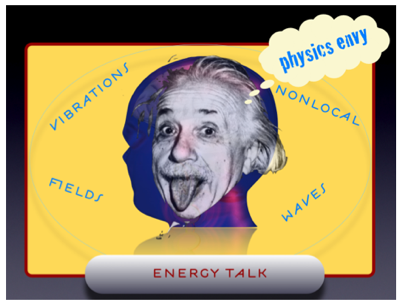
But mind
or consciousness is not part of the physical world.
It is non-physical.
In my
work, and particularly in Consciousness
from Zombies to Angels, I
encourage people to “watch their
language” when talking about consciousness. I
point out that using “energy talk” misses
the most important point about
consciousness—namely it is subjective.
Everything
in physics, and all the terms borrowed from physics,
refer to objects,
to things
in the objective world.
Consciousness is not an object, it is not objective.
It is the subject
of experience. It
is awareness
and
choice.
It cannot
be detected by physical senses or instruments, and
cannot be measured. Therefore, it makes no sense to
use the language of physics to describe what cannot
be physically measured.
Nevertheless, people tend to cling to “energy
talk”—because, paradoxically, they think
it makes what they say sound more
“scientific” or more
“grounded.” Actually, the opposite is
true. The language of physics is the language of
abstractions. If we want to be truly
“grounded” then we should ground what we
say in what we actually experience—and use
“mind talk” instead of “energy
talk.” We should not confuse the
experiencer
(consciousness)
with what is experienced (energy).
Frequently, when I make this point, someone says:
“But if we give up energy talk then we would
have to invent a new language.” This surprises
me. I point out that, in fact, we already have a very
rich vocabulary for talking about
consciousness—words such as
“intention,” “attention,”
“purpose,” “meaning,”
“perceiving,” “observing,”
“remembering,” “wanting,”
“anticipating,” “believing,”
“doubting,” “affirming,”
“denying,” “imagining,”
“judging,” “understanding,”
“feeling,” “experience,”
“choice” . . . and on and on. None of
these words can be reduced to “energy
talk” or be explained by physics.
Consciousness
has its own very appropriate language.
I’m
suggesting that if we want to push beyond the final
frontier, then we will make much better progress if
we “watch our language” and use
“mind talk” instead of “energy
talk.”
Q:
Your book has four parts. Can you summarize the key
points?
CdeQ:
In
Part 1, we begin
with the Philosopher’s Gift to explore:
What
is consciousness? I focus on
the three core problems in philosophy of mind:
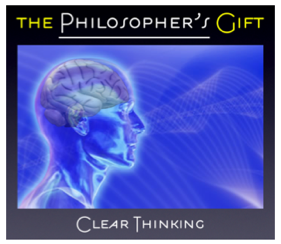
(1)
Mind-body connection:
How are
mind and body related—does the brain produce
mind, or does consciousness create the brain; do they
exist in parallel universes or does consciousness
“go all the way down”?
(2)
Other minds: How can
we tell if anyone else has consciousness—or
even if rocks can feel anything?
(3)
Free will:
Do we
really have choice, or is everything determined by
God, by genes, or by physics?
In
Part 2, we then
shift to the Scientist’s Gift to
explore: How
the brain works and
how
consciousness is related to quantum
physics.
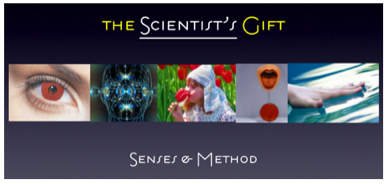
We enter the curious wonderland of the quantum to see
how its strange inhabitants may give us insights into
the origins and nature of consciousness. If you ever
wondered what a quantum is, what
“nonlocality” really means, or why
quantum physics might be relevant to consciousness,
you will find easy-to-grasp keys to this fascinating
domain.
I also show why recent advances in neuroscience and
brain imaging that claim to “photograph
God” are highly misleading. Yes, it is useful
to know what goes on in the brain when someone is
having a mystical experience, but no scientific
instruments can probe or capture what goes on in
an experience.
Information
about the brain is not the same as information about
consciousness. Brain is not mind, and brain science
is not consciousness science.
For that, we need a very different kind of science,
with a very different approach. Instead of standard
Plate-Glass science, which separates subject from
object, we need a new “Looking-Glass”
science, where there is no separation. In true
consciousness science, the mind is exploring itself.
And once we turn the beam of inquiry back on
itself—when awareness is focused on
itself—we must be open to whatever bubbles up
in consciousness. We must be willing to engage with
our Shadow, with all the fears, and shame, and anger
hiding out in our unconscious mind. In short, a
consciousness scientist must be willing to undergo
psycho-spiritual transformation.
Only when we open up to our inner
“zombies” and “angels,” can
we move forward on the path to enlightenment.
Then, in
Part 3, we focus
on the Shaman’s Gift and Mystic’s Gift
and explore: Why
consciousness is important. We learn
how our minds fall into different patterns, or
grooves of thought, and how to shift out of the
habits that keep us stuck.
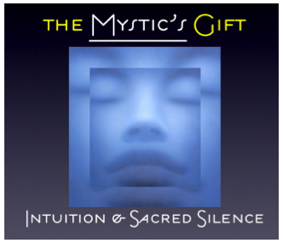
We learn how to recognize “strange
attractors” that pull our minds this way and
that. We learn how the ego is formed, how it grows
into our personality, and becomes embodied. We also
learn how to transcend these restrictions through
creative acts of choice and letting go to realize our
full potential.
Besides learning to recognize our patterns, the
Mystic’s Gift takes us into the realm of scared
silence, rooted in experience beyond belief. It helps
us to accept all of
who we are—our
ego, our personality, our shadow, our light, our
zombies and angels. We discover what it means to
“Know Thyself” by following the seven
steps to knowing who you really are.
Finally, in
Part 4, we shift
to “Consciousness in Dialogue.” One of
the greatest satisfactions of being an author,
teacher, and public speaker is the feedback I get
from people who have read my books, attended a talk,
heard me on the radio, seen me on TV, visited my
website, or taken one of my classes. I get a lot of
emails, and, thankfully, I’m often challenged
to defend or clarify something I’ve written or
said. It keeps me on my toes. Sometimes a real gem of
a question whizzes through cyberspace and gets me
thinking deeper and more carefully about an idea
I’ve put out there.
I’ve collected these “gems” over
the years, and have created an archive of
“MindBytes”—a series of questions
and answers organized under headings such as
“God,” “Energy,”
“Cosmos,” “Evolution,”
“Miracles,” “Quantum,”
“Time,” “Beliefs,” and, of
course, “Consciousness.” These are
“learning nuggets” that highlight
important questions, and I include examples at the
end of each chapter. Part 4 of the book is composed
of longer dialogues on topics such as
“experience beyond belief,”
“consciousness, energy, and evolution,”
“are rocks conscious?” and “is
consciousness the same as spirit?”

Q:
What are the seven steps to knowing who we really
are?
CdeQ:
Watch
Your Language
Pay
attention to the words you use when talking about
consciousness.
Be
precise. Get beyond “physics envy.” Use
“mind talk” not “energy
talk.”
Identify
the Problem
What do
you want to know about consciousness?
1. Mind-body
problem: How are
body and mind related?
2.
Problem
of other minds: How do
you know whether anyone else has consciousness, or
what’s going on in others’ minds?
3.
Problem
of free-will: Do your
really have a choice or is everything determined by
physics or by god?
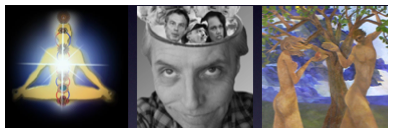
Learn How to Look
How do you
explore consciousness? Learn the difference between
our Four Gifts of Knowing—Scientist’s
Gift of senses;
Philosopher’s
gift of reason;
Shaman’s
gift of feeling;
and
Mystic’s Gift of intuition
and
sacred
silence. Learn why
understanding the brain is not the same as knowing
your mind.
Recognize
Your Patterns
How do you
organize your thoughts and beliefs? An attractor is a
tendency of a system to fall into a recurring
pattern. We all have unconscious habits of mind and
patterns of behavior that drive us. What attractors
or patterns drive you?
Consciousness is a
complex system that shapes itself around four major
types of “attractors”—
point
(ego),
cycle
(personality),
torus
(new
possibilities), and strange
(creative
self-expression).
Point
attractor—kicks
in when you are fixated or obsessed with something.
When used to focus attention, it can be positive. It
is the way of the
ego.
Cycle
attractor—jumping
from one fixation or addiction to another,
oscillating between competing desires. When the cycle
attractor kicks in, we move back and forth between
attraction and aversion, between positive and
negative. It is the way of
personality.
Torus
attractor—a
way out of the repetitiveness of ego and personality
habits. Instead of cycling back and forth between
pleasure and pain, we “break the spell”
and spiral into new possibilities. It is the way
of
embodied imagination.
Strange
attractor—combines
order and chaos, creativity and stability. Opens us
up to choice and creativity. It is the way of
self-expression.

Transformation is a whole-system shift that
involves all
attractors—the
ego point, the personality cycle, the embodied torus,
and the strange Self.
Know
Thyself
The
keystone of every spiritual philosophy—from
Socrates to Buddha—is the question:
Who
are you—really? Are you
your ego, your personality, your body, or your soul?
Do your have a core self? Are you an avocado or an
artichoke? Can you get beyond your ego? What happens
if you let go of your cherished beliefs?
Embrace
Your Shadow
Only by
accepting and integrating all
of who you
are, can you truly know who you are and step on the
path to transformation.
From early childhood, we have all suppressed fear,
shame, guilt, and anger. We have stuffed
“negative” experiences down, out of
consciousness. But these demons never went away. They
live in us, in our bodies and minds, as our
“shadow” self—our “inner
zombies.”
We have done the same with our “light,”
too. Along with our miserable selves, we have blocked
off our magnificent selves. We often fear our
greatness and are ashamed of our power. We suppress
our “inner angels,” too.
Transformation
happens only when we acknowledge and embrace our full
humanity—our Zombie shadow and Angel light.
Practice
Transformation
Transformation
is not a one-time event. It is a lifelong process
that requires cultivating consciousness at every
moment, in every circumstance. It’s a
never-ending dance between ego and spirit, between
Shadow and Self, between Zombie and Angel.
All seven
steps to knowing who you are can be summed up in a
single phrase: experience
beyond belief. And this
last step itself involves its own seven
steps—reflecting the fractal nature of
transformation.

Q:
What are the seven steps to transformation?
CdeQ:
Step
1: Accept that beliefs are
natural.
We all
have beliefs. There’s no getting away from
that. It’s a simple fact of life. It’s
natural to have beliefs—it’s what our
minds are for. They evolved to give us maps or
shortcuts that help us navigate through life. Just
don’t mistake your beliefs for reality. The map
is not the territory. You don’t drive your car
onto the map and you don’t eat the menu. Yes,
beliefs are natural, nevertheless they disconnect us
from reality.
Step
2: Realize that every belief is a habit of
mind.
Thoughts
and beliefs are abstractions—literally
“snapshots” of reality taken from the
ongoing flow of experience as it happens moment by
moment. They are frozen fragments of consciousness,
mechanical habits that keep you stuck in the past.
Mesmerized by your beliefs, real life flows past
unnoticed. Here’s how it works: You have
an experience.
Then you interpret
it. Turn
it into a belief.
Then
into dogma.
Beliefs, then, are nothing but mental habits,
stepping stones to dogmatism and fundamentalism.
Step 3: Recognize the origin of
beliefs.
Every
belief is composed of thoughts, and every thought
begins as a feeling. Think about it: Long before you
could think or speak, as an infant your life was
flushed with feelings.
Feelings
come first. They are grounded in your body and
connect you with reality.
Step 4: Focus on feelings in the
body.
Feelings
are literally the sensations you experience in your
body. Learn to pay attention to them. Take time out
to sit quietly and just notice what’s going on,
without trying to change anything. Simply feel your
sensations—in your chest, around your eyes, in
your legs, your back, your belly . . . Remember:
Every thought begins as a feeling, and feelings
connect us with the world. They are messages from
nature. Learn what it means to feel
your thinking—and
not just think your thoughts.
Step 5: Stop believing your
beliefs.
“But,”
you say, “if I don’t have any beliefs,
I’ll have nothing.” Far from it. In fact,
letting go of beliefs opens you up to
what
is really happening in your experience—right
now! And
experience is the royal road to reality. Have you
noticed: Experience and reality always happen
together, right
now. Also,
notice I didn’t say “stop having
beliefs.” That would contradict Step 1. As long
as you have a mind, you can’t help having
beliefs. It’s what the mind does naturally, and
you have little choice about that. But you do have a
choice whether or not you believe
your
beliefs. You do not have to believe that your beliefs
are true.
Instead,
you can learn to hold beliefs as “likely
stories,” as Plato once said. So, take courage,
let go of your beliefs, don’t hold onto them,
and see what happens. I promise: You won’t
disappear, you won’t die.
Step 6: Cultivate being the
Witness.
As you
practice sitting quietly, feeling the sensations in
your body, noticing thoughts as they come and go,
arising from your feelings, you will come to a new
realization about who you are. You
are not your mind. You are not your thoughts or
beliefs. In fact,
you are not even your feelings. In this evolving
state of consciousness, you will begin to experience
a new sense of freedom. You may begin to notice
something quite profound: someone,
or some other part of you, is observing everything
that is going on. The
question is: Who?
That’s
the sixty-four-billion dollar spiritual jackpot.
It’s the essence of spiritual practice. Who,
then, is observing the flow of thoughts
through
your mind? Well, that’s
who you
are! You are the Witness that unifies self and world.
And the way to get to this realization is by
practicing experience beyond belief.
Step 7: Spend more time in ‘sacred
silence.’
In the
end, the core wisdom of all spiritual traditions is
some form of “Let go and let God.” Learn
to just be—by
yourself or in community. Be comfortable beyond
thoughts, words, judgments, or beliefs. You
don’t need to sit still and quiet to practice
this, but it helps. It takes some discipline to tame
the mind, to wean it off its diet of beliefs, to
break the habits of thoughts, desires, and fears that
inevitably distract us and distort reality. After a
while, though, when you pay more attention to the
Witness, you come to realize that the deepest source
of wisdom is not what you think or believe. Rather
wisdom lies in that space of “sacred
silence” beyond all words and ideas,
where what
is shines
forth. Those who open up to it, often call it the
Source.
Christian de Quincey, Ph.D.,
is Professor of Philosophy and Consciousness Studies
at John F. Kennedy University; Dean of Consciousness
Studies at the University of Philosophical Research;
and Director of the Center for Interspecies Research.
He is also founder of The Wisdom Academy, offering
private mentorships in consciousness; and cofounder
of The Visionary Edge, committed to transforming
global consciousness by transforming mass media. Dr.
de Quincey is author of the award-winning book
Radical
Nature: Rediscovering the Soul of
Matter
and Radical
Knowing: Understanding Consciousness through
Relationship.
His latest
books are Consciousness
from Zombies to Angels and
Deep
Spirit. Samples
of his writings on consciousness and cosmology are
available at
www.deepspirit.com.

